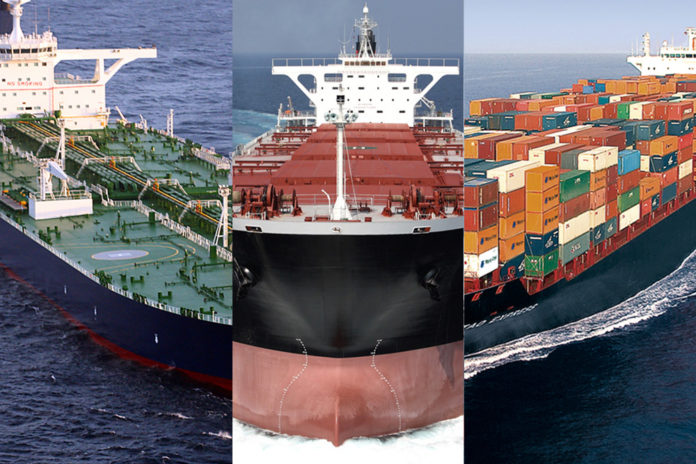
Various indices for container shipping are pointing to a slight relaxation in space shortages – only a false dawn? By Michael Hollmann[ds_preview]
Exporters and importers are afforded a bit of relief on overseas shipments as the red-hot container spot market continued its gradual decline since China’s Golden Week in October. However, experts believe the market will remain volatile, warning that there could still be a rebound to peak levels ahead of Chinese New Year.
It is the first time in many months that the benchmark indices in our market compass table for container freights and charter rates trend down in unison. The most striking decrease could be noticed in spot freight levels on the eastbound transpacific route – the world’s busiest container trade lane. The Freightos Baltic index rate for the China/US West Coast run, which covers the most urgent spot segment including space guarantees, has fallen by over 25 % since September, hovering just below 15,000 $/FEU as HANSA went to press. Meanwhile the Xeneta Shipping Index for the same route, covering rates with a longer validity up to 31 days, eroded by 7.4 % month-on-month to 8,023 $/FEU. The difference between the two reflects the premiums for very prompt loadings.
The decline in freight levels took place despite a temporary worsening in port congestion on the US West Coast, with the number of container ships anchored in the San Pedro Bay rising to over 80 units at the start of calendar week 46. However, anecdotal reports from the US logistics and freight forwarding sectors suggest that fresh import demand has somewhat slackened in recent weeks. All the cargo for the Xmas shopping season is on its way or already stored in warehouses in the US.
Import demand past the peak?
The National Retail Federation projects a 18 % increase in US container imports for the full year 2021 to a new annual record of 26 mill. TEU. Attention is meanwhile shifting to 2022 and how import volumes for the next peak season will develop. Can this year’s pace of growth be maintained? Economists say that consumption patterns will inevitably shift back to services at some point following the boost in spending on physical goods amid the lockdowns and corona restrictions. However, speaking at a panel discussion hosted by Hapag-Lloyd, Otto Schacht, Executive Vice President Sea Logistics at Kuehne+Nagel, stated that sentiment among major US importers has not weakened, yet. Many of them were budgeting for another 20 % growth in volumes for next year in order to bring inventory levels back up, he explained.
Freight forwarders, shippers and carriers are closely watching month-on-month developments in the transpacific trade. It is the only route that has seen massive growth compared with pre-corona levels, buoyed by hefty increases in government spending. If growth there abates and fleet capacity gets released into other trades, the knock-on effects could be significant. Florian Braun, Head of Ocean Freight EMEA at Flexport, said that the market would probably have to wait until Chinese New Year at the start of February for next year’s freight fundamentals to shape up. Until then markets could experience another rally due to an export rush ahead of factory closures in China.
Carriers’ appetite for tonnage dissipated slightly in the past weeks, judging by notable consecutive falls in charter rate indices. The declines were mainly driven by a steep fall in enquiry for short-term charters which were previously fixed at six-digit hire levels, as shipbrokers point out. Clearly the economics of such expensive ad-hoc round trips were shattered by the fact that peak spot rates have weakened and voyage cost calculations vastly exceeded due to excessive waiting times, with ships waiting 50 days and longer in some cases for a berth at Los Angeles. Brokers have also raised their eyebrows at occasional long-term fixtures that were done at levels below last done although the relevance of these for the entire market was doubtful, some said. For instance, the panamax 4,252 TEU »SPIL Kartini« was extended by OOCL for three years at a moderate $ 51,000 while the 2,702 TEU »Najade« extended with Wan Hai Lines at $ 35,000 for three years. Both were forward fixtures for lay/can dates in March – after the ominous Chinese New Year … ?



















